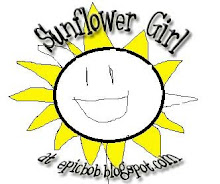Rachel Carson was born May 27, 1907, in Springdale, Pennsylvania. Even though her protective mother kept her home from school quite often, she also installed a love of nature in Rachel, and the outdoors helped Carson's education anyway. In fact when she was only 10 years old, her story A Battle In the Clouds was published in the St. Nicholas Magazine, a children's magazine where William Faulkner, F. Scott Fitzgerald, e.e. cummings, Edna St. Millay, and E.B. White were first published.1
Eventually, Carson got into Pennsylvania College For Women (Now Chatham College). Midway through her studies she took a biology class for science, and met Mary Scott Skinker, the biology professor. Although Carson originally majored in English, she switched majors to biology after being inspired by Skinker.
After college, Carson won a scholarship to Woods Hole, MA, where she saw the ocean for the first time. The sea would become one of Carson's most frequent topics for books.
She studied at the John Hopkins University, and got her degree in zoology. She then went back to Woods Hole to study at the Bureau of Fisheries (now the U.S. Fish and Wildlife Service). She wrote seven minute radio scripts for the Bureau, before being hired for a permanent job of a junior aquatic biologist. While she was working as a biologist, she edited many pamphlets, and published her first book, Under the Sea Wind. The books were well received, but due to the effects of Pearl Harbor, it didn't sell well.
Carson's government work increased, and it was several years before she had a chance to publish another book. During her “real” work, however, she had many opportunities to travel and research marine life.
She began writing her second book in 1948, and in 1951, The Sea Around Us was published. It was very well received, stayed at fifth place on the Best Selling list for eighty-six weeks, and won several prestigious awards. Carson received enough money from the sales of this book that she was able to resign from her government job, and devote all of her time to creative writing. Several years later she published her third book, The Edge of the Sea.
A while after her third book was published, Carson had a plea for help from Olga Owens Huckins. Huckins had a bird sanctuary, but after DDT was sprayed over the area, the birds had all died. She requested assistance from Carson, who had been concerned about pesticides for many years. She immediately set out to write another book to raise awareness on the negative impact of pesticides, and soon after, Silent Spring, a scathing review of pesticides, the government's use of them, and Carson's last book, was published.
Silent Spring caused quite an uproar. Carson was personally attacked as being hysterical, as over sensationalizing the issue, and as an alarmist. Not everyone, however, thought that she was exaggerating the issue. President John F. Kennedy read the book, and it influenced him to call for the testing of chemicals, and to the banning of DDT.
Rachel Carson died in 1964 at age 56 after a long battle with breast cancer.
1Learning To Give (www.learningtogive.org), Carson, Rachel (www.learningtogive.org/papers/paper81)
Resources:
Carson, Rachel
Rachel Carson Biography
The Life and Legacy of Rachel Carson
Fish and Wildlife Service: Rachel Carson





No comments:
Post a Comment